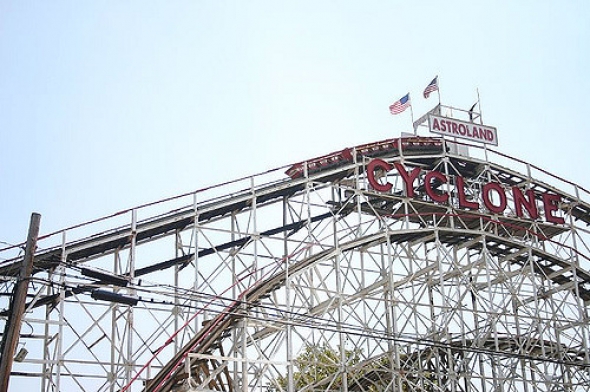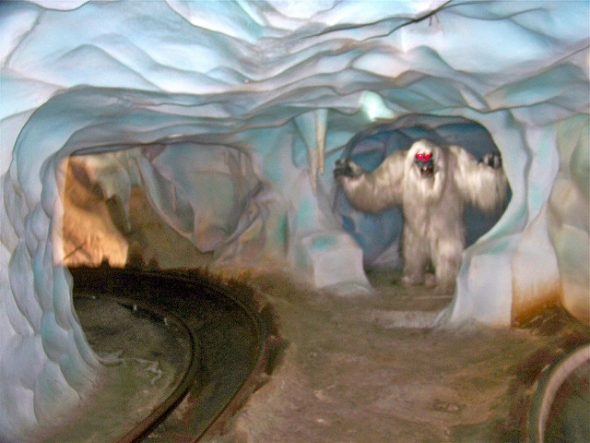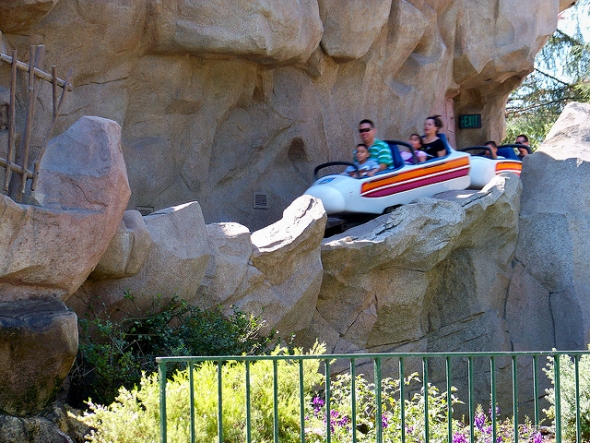Another Coney Island classic
Image: jeffpearce, Flickr (license)
The first phase of the roller coaster design war transpired at the turn of the 20th century. By this point, it was an international sensation. Developers tried to one up one another by adding faster speeds and more bumps. Both the French and Americans crafted vertical loops in their tracks, which sounds like fun in theory. These early versions suffered from reckless engineering, the type we’d call carnival quality today. On multiple occasions, riders fell out of the coaster cart during a loop. Ride harnesses were barely more than safety straps at the time, assuming any sort of precautionary gear was in place. What mattered most to coaster constructors was attendance, something that hasn’t changed much over time.
Jack and Irving Rosenthal noted that the strongest coaster sales remained in Coney Island, presumably because the tourist area offered the original and catered to a huge metropolitan area. They invested $100,000 in 1925, the equivalent of $1.4 million today, to build a more modern take on the coaster premise. By then, the Switchback Railway was 40 years old…and not their property. They needed a thrill ride of their own.
Their new roller coaster ran way over budget, more than 75 percent by some estimates, but the end result was worth it. The ride known as The Cyclone became one of the all-time staples of amusement parks. When it debuted, this ride cost a quarter, and guests happily spent that amount. They still do. Almost a century later, the price is a factor of 40 larger. That’s roughly triple its inflationary rate. Despite the stiff spike in cost, guests at Luna Park happily pay to take their place in history as one of the tens of millions of humans who have ridden The Cyclone.
What makes the ride so special? Realistically, it’s the sense of history. Even though it’s only 85-feet high, it does stretch 2,640 feet, giving it a ride time of almost two minutes. It offers a 60-degree drop and can reach 60 miles per hour today, quite bit more than its original version. As the single most popular wooden roller coaster of the first half of the 20th century, The Cyclone stands out for its heritage more than its specs, though.
The bridge to modernity travels through the Matterhorn
Image: Castles, Capes & Clones, Flickr (license)
The history of the roller coaster comes full circle with the Matterhorn Bobsleds, which opened to the public in 1959. It was the first steel coaster, which is reason enough to mention it. What’s more interesting, however, is what the Matterhorn represents. The genesis of the roller coasters we enjoy today was Russian Mountains. And these constructs were little more than glorified sleds placed on controllable paths.
What’s the Matterhorn? It’s a steel roller coaster that simulates the experience of sledding down the side of a mountain. In other words, it’s a metallic Imagineering recreation of Russian Mountains. Your mind should be blown right about now.
Whether Walt Disney appreciated the symmetry of his creation is up for debate. As you will learn in this description of the secrets of the Matterhorn, Uncle Walt loved the incongruity of theme park tourists enjoying a snow day at a southern California theme park. The weather would never allow that, so ride designers had to bring the snow each day. They also needed an attraction that could outdo standard roller coasters of the day.
Since a roller coaster arms race had been ongoing for decades when Disneyland opened, their version had to blow the competition out of the water. Otherwise, critics would lambast Imagineers for delivering something ordinary. This was the driving impetus in many of their technological innovations of the 1950s and 1960s. The press forced Imagineers to compete against their own reputation and legacy more than against other ride developers.
Image: Castles, Capes & Clones, Flickr (license)
The idea of the Matterhorn came with a conceptual crisis. Unlike conventional sled rides, bobsleds twist and turn a great deal. When a person jumps on a sled, they head straight down unless something goes horribly awry (and I have the stitches to prove it). The bobsleds made famous at the Winter Olympics twist through hairpin turns that a basic sled couldn’t match. Disney’s vision for the Matterhorn exceeded any possible implementation of Russian Mountains.
Such innovation brought technical challenges. Regular wood tracks don’t bend the way that Disney needed. Also, they didn’t provide the freedom of movement a bobsled required. The ride cart needs to slosh around the turns. Otherwise, the rider will understand that they’re on a rail system, ruining the illusion of the experience, a huge no-no at Disney, even during the 1950s.
Uncle Walt had already conceded on one of his early demands. He’d wanted actual snow at the Matterhorn, a functional impossibility. He wasn’t about to capitulate on a quality bobsled simulation, too. Disney checked in with his friends at Arrow Development, similarly inventive ride designers that had built six of the opening day rides at Disneyland. He trusted them to provide an honest opinion about the feasibility of his idea while hopefully providing quality input on how to construct it.
The finest minds in theme park ride development put their heads together and came up with something revolutionary. They recognized that steel could bend in ways that exceeded wood. Thanks to some deft metallurgy, the two companies crafted the world’s first tubular steel track. It could twist and turn at angles that were functionally impossible with wood. The continuous track allowed multiple coaster carts to ride on the track at once, and the tubular nature of the tracks meant that the carts could zoom past one another at key points, a feature that remains a highlight of the Matterhorn to this day.
Image: EmilyGrace Photography, Flickr (license)
The introduction of steel in coaster development meant everything to the modernization of track design. The massive heights and extreme velocities of Gigacoasters are only viable now thanks to steel alloys that conduct heat quicker and more reliably. More importantly to Disney, the bobsled simulation was extremely authentic since the curved track felt just like an actual bobsled course. Riders could easily imagine themselves participating at the Winter Olympics as they streaked down the steel track. It’s one of the greatest attractions in the history of Disney. More importantly, it’s the roller coaster innovation that led directly to extreme velocity, maximum G’s, constant airtime thrill rides that adrenaline junkies adore today.
The most amazing part of the evolution of the modern roller coaster is how circular it is. Russians started with sleds that they sped down icy slopes. Then, they added tracks to maximize velocity. Over the centuries that followed, other inventors took those same ideas and meshed them with other innovations such as the train. They also threw in some gravity for good measure to deliver a better rush for their guests.
Afterward, a savvy American lingerie manufacturer developed a cart with wheels and a man-made track that didn’t need to ice to operate. His version of the wood roller coaster became the standard that dominated the industry for several decades until a different ride in the same Coney Island area took that title.
Some 30 years later, Walt Disney and his Imagineers decided that they wanted to construct their own roller coaster, but they didn’t want it to seem like anything already in existence. They chose a new material for their tracks, and steel became the new standard in the industry. But how Disney used it is the most beautiful part. They chose to build…a mountain sled ride. If Catherine the Great were alive today, the Matterhorn at Disneyland would remind her of home. That’s because it’s the Russian Mountains attraction that Russians never made.





Add new comment